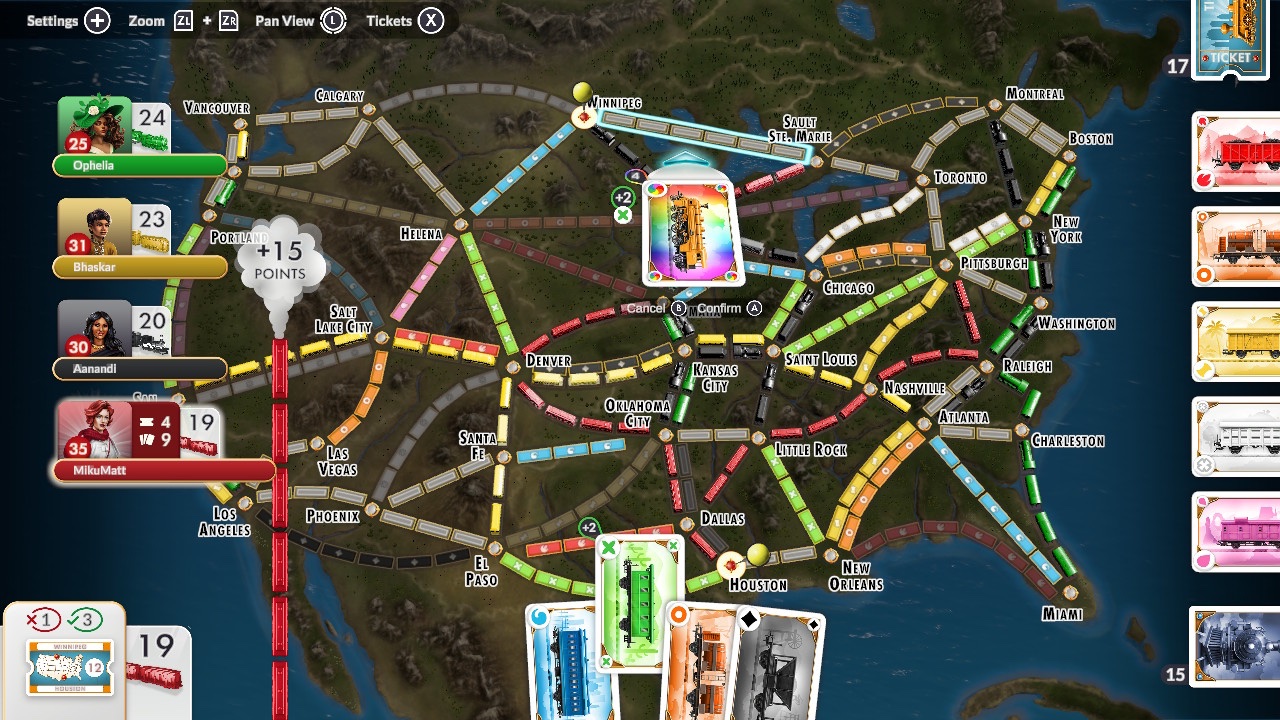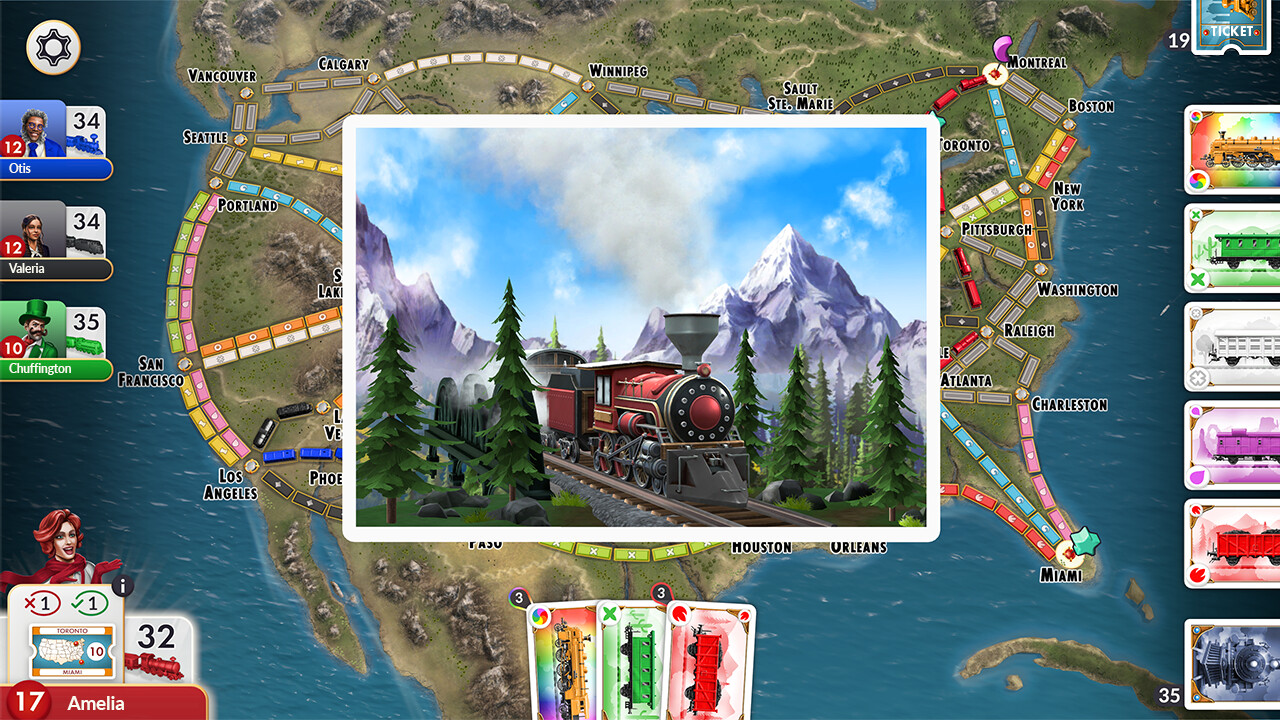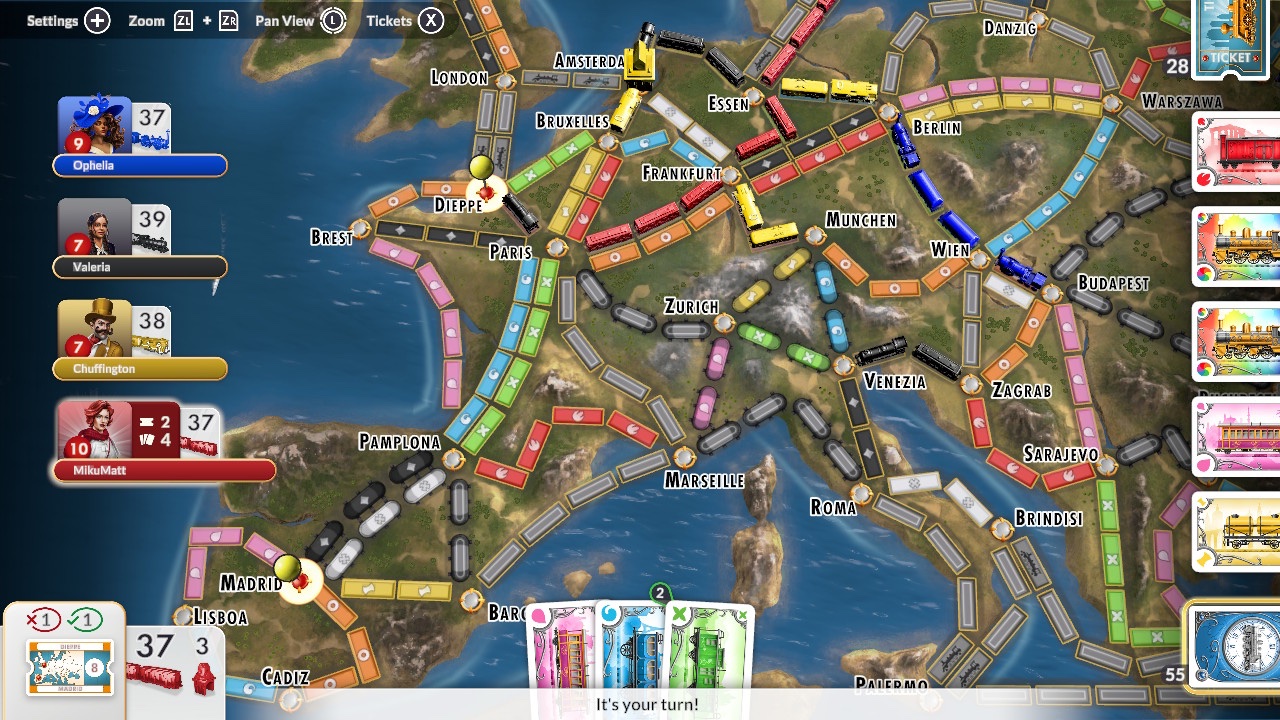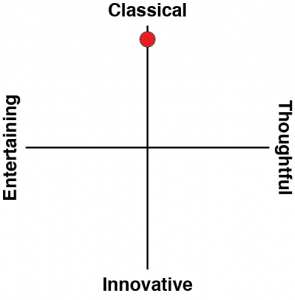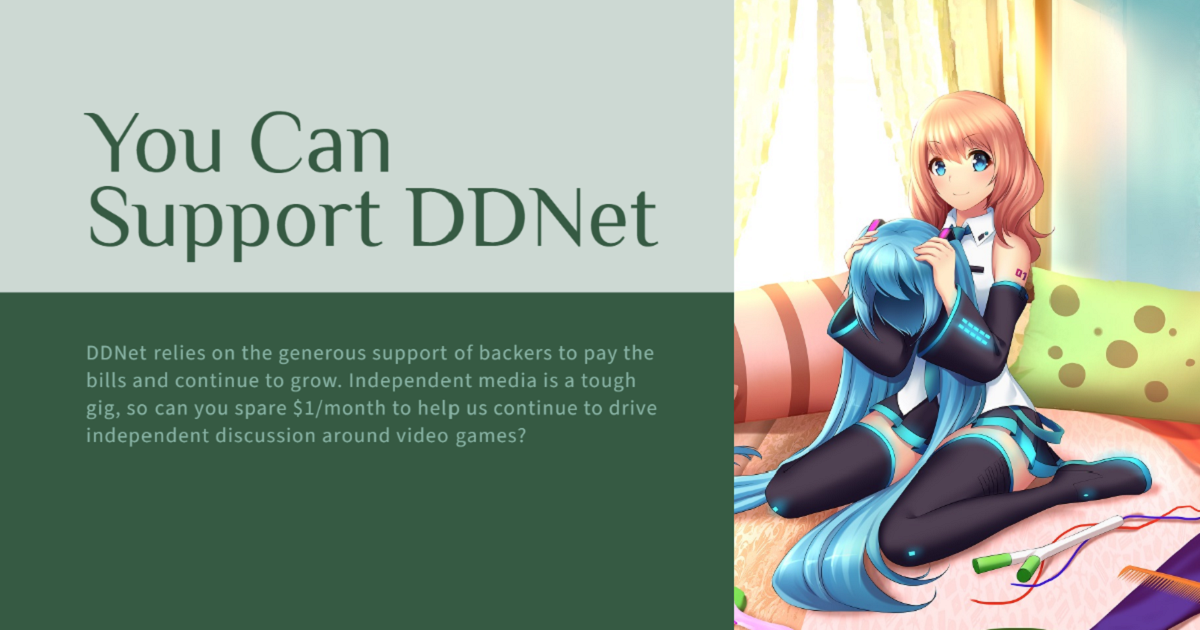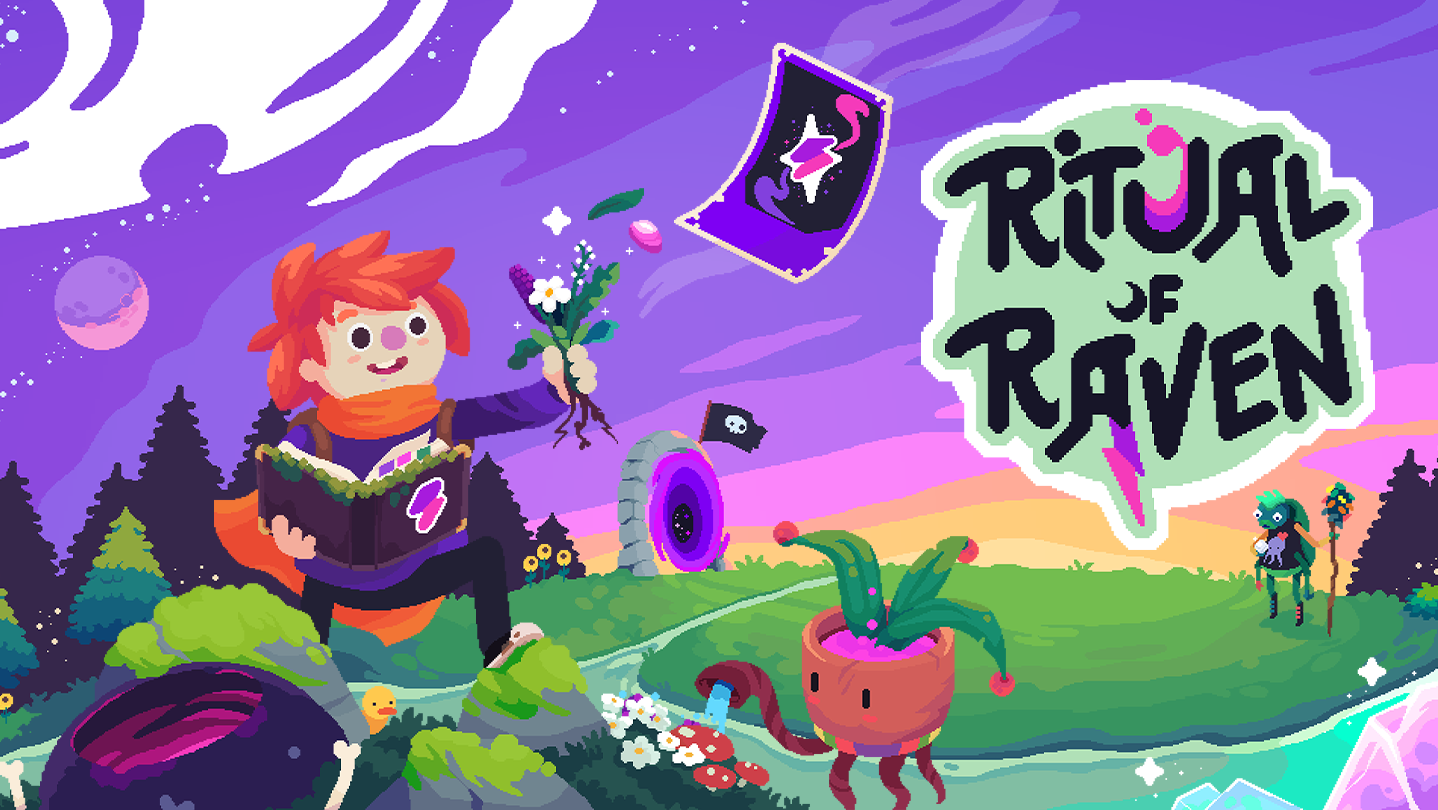Ticket To Ride is, along with Catan, on the way to be our generation’s Monopoly and Risk. First released back in 2004, is has sold 18 million copies, been translated into most major languages, and has had innumerable expansions added to it. There have also been multiple video game adaptations, and thanks to the newest one, by Marmalade Game Studio, we get to enjoy it on our Switches.
Marmalade Game Studio is a digital board game specialist, and the games it adapts are… not the type to push players. We’re talking about adaptations of Monopoly, Exploding Kittens, The Game of Life, Mouse Trap, and Cluedo. In fact, Ticket To Ride is probably the closest the developer has come to a “serious” board game at this point in time, though to be clear, being a more serious game than Monopoly doesn’t mean it’s Twilight Struggle or War and Peace, either.
Ticket To Ride is very much an all-ages game that can be learned in about five minutes. The gameplay loop is simple: There’s a map of a large area of land, dotted with cities and connected by train lines. You’ll draw some cards that list two cities that are far apart from one another, and your job is to connect them via train tracks that create a trainline from one city, through a bunch of other cities, to the end destination.
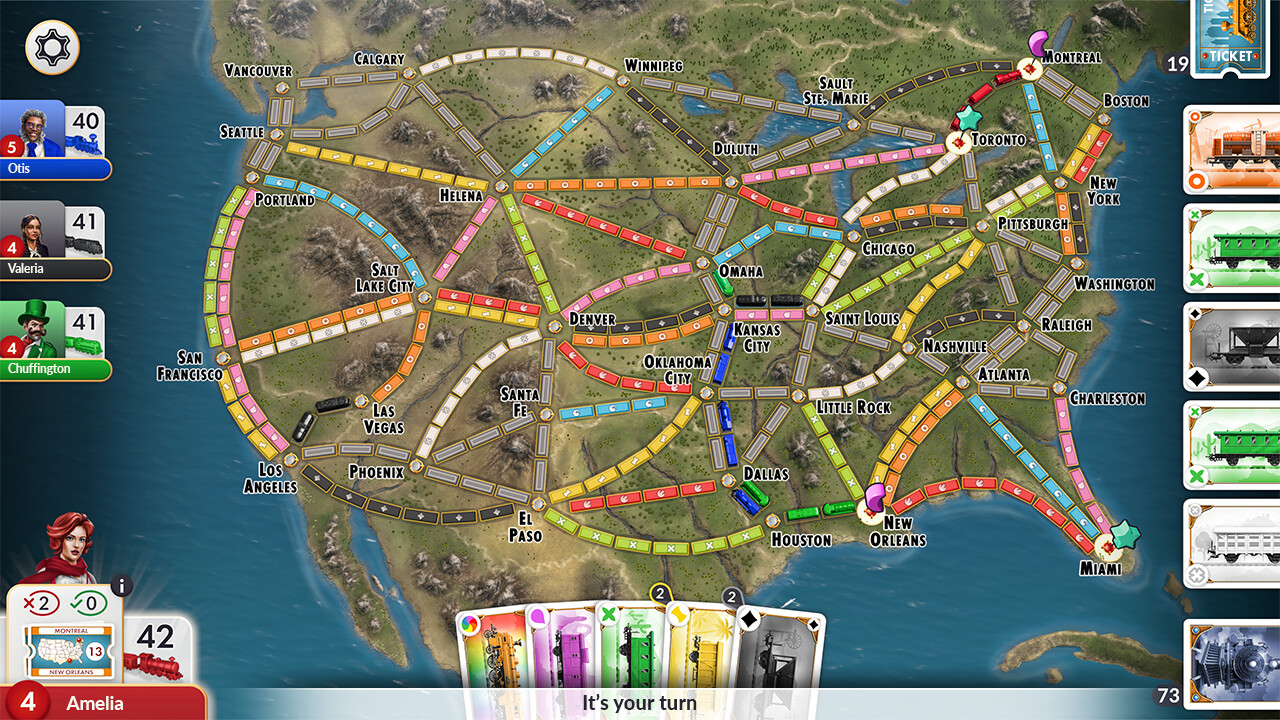
Train tracks are built by collecting tickets of certain colours. Then, when you have enough tickets to fill all the spaces on the board of the same colour linking two cities, you can trade the tickets in to place your trains down on that path. So, say there’s one route that connects two cities together with four pink spaces on it. You could occupy that track if you had four pink tickets, but not if you had four yellow tickets.
Once you’ve occupied some tracks, no one else can, and that’s where the strategy of Ticket To Ride comes in: Most cities only have one track linking them, and two at most. This means you need to vie with the other players to get the connections that you need to link those two cities on your cards. Each player has different cities that they’re looking to connect, but if another player grabs the optimal routes, it can require a very roundabout route to connect them.
When you do successfully link to cities up, you get bonus points and can then draw another bonus card and start the process again. You get way more points linking two cities that are very distant to one another (think Los Angeles and New York) than two that are closer together. But, naturally, the greater the distance between two cities the more tracks you need to lay down and the more likely it is that someone will come through and block the optimal route. Any uncompleted routes at the end of the game result in a loss of points to your score, so being ambitious comes with its risks.
That’s all there is to Ticket To Ride. It is a relaxing, easy-playing game that just about anyone can enjoy with just enough thought and tactics to make it feel like victory is a result of your capabilities rather than pure luck. The downside is that there’s also a hard ceiling and unlike something like Wingspan you’re not going to feel like you’re constantly getting better at it. After a dozen or so games you’ll have essentially mastered Ticket To Ride, but it remains an easy game to reach for when figuring out what to play with friends for that weekend gaming session.
Speaking of which, the online multiplayer with this app is crossplay compatible with the other platforms, and it’s on most of them (Steam, mobile, PS4/5 and Xbox). It does take a bit of fiddling around to get going – Marmalade uses its own community app, called Bubble, and you need to set up an account on there to organise multiplayer groups rather than the Switch’s friends list, but once you get that set up organising games is smooth and seamless.
Otherwise, the game fits with Marmalade’s M.O: It’s pleasant to look at without being the aesthetic tour de force of something like Wingspan. It can be a little difficult to see the unclaimed spots on the board, versus the ones that players have occupied, particularly when playing in handheld mode. The base version of the game also only comes with one map, and to get the most out of Ticket To Ride, you’ll want as many maps as possible, so expect to spend big on DLC.
It’s very good that the Switch has Ticket To Ride, as it is a lovely, inoffensive, easy-playing board game. It’s as accessible as something like Risk, Monopoly, or Catan, but less luck-based and therefore far less frustrating than those other games. Marmalade is a highly competent developer and while the presentation of the game isn’t the most inspired, this is still going to be heavily in the rotation for multiplayer fun if your group has any interest in board games at all.
